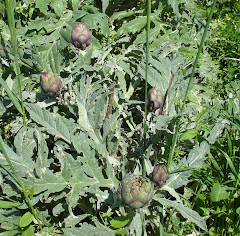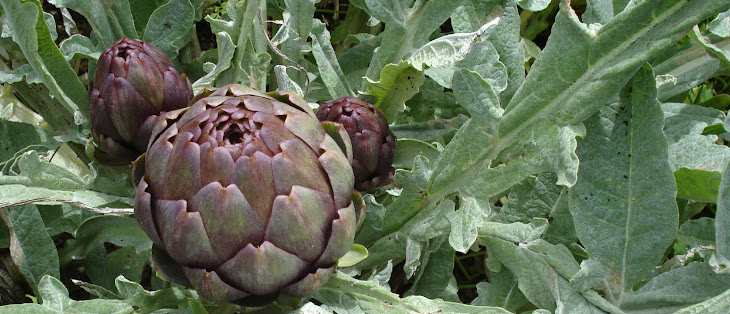
The fish stall arrives each Wednesday from Valras-plage, the stallholder selling the fish caught the night before on the family boat. She only sells fish which they have caught, and when it
I made some changes, as I usually do since I rarely follow a recipe exactly.
Fish stew - marmite de poisson - for 4 people

1 onion
1 red pepper
3 large cloves of garlic
6 anchovy fillets
3 bay leaves
3 sprigs of thyme
3 twists of lemon peel
olive oil
a large glass of white wine
1 large grey mullet (the stallholder descaled it and cut it into portions for me)
1 jar of preserved tomato passata with green peppers (bottled last July)
1/2 litre fish stock, made with the head and other bits of the fish
2 dozen mussels
I sautéed the sliced onion and red pepper in olive oil until soft and just beginning to brown, then removed them from the pan. As Nigel Slater suggests I sliced the garlic and fried them gently in olive oil with the anchovy fillets and the herbs. When the anchovies disintegrated I added a large glass of white wine, the fish stock and the jar of tomato and green pepper and let it all simmer for about 20 minutes. Then I added the pieces of fish until they were cooked - about 10 minutes. I then leave it until Thursday, when the van from Bouzigues arrives with mussels and oysters. On Thursday evening I cooked about 1/2 kilo of large mussels in a mixture of half white wine and half water with a bay leaf, for about five minutes until they were all open. I shelled these mussels and added them to the stew. When our friends arrived for dinner I heated the stew and when it was simmering added the other half-kilo of mussels in their shells and cooked it all until these mussels were all open. I served it with Camargue rice.
I think it all worked well - the colours looked good and the fish stayed firm - something to remember if you're using other kinds of fish, as it has to be something that won't disintegrate while cooking.
























